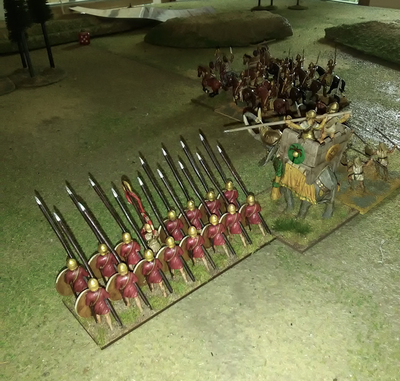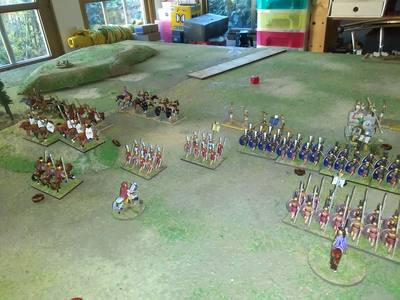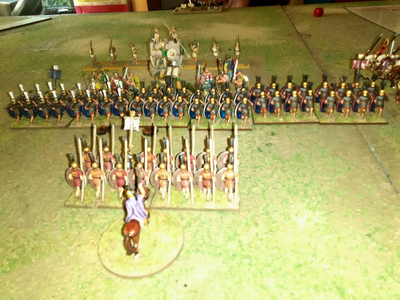|
After five games of Art de la Guerre against four different opponents, I am starting to feel more comfortable with these rules. DBA experience helped me to get going but ADLG needed to offer more: DBA is great for introducing new players to Ancients but for my taste is too vanilla to use as more than an entry game. The signs aree promising that ADLG has replay value and more subtlety to discover. We have used the same two 2000 point armies for each battle: Republican Romans versus Carthaginians. Two games were with oldest sparring partner and tabletop nemesis, Keith; two with wargaming partners who are new to Ancients, Matt and Ian; and one with Warren, a complete newcomer to gaming. Keith, with whom I started playing Ancients back in 1982, knows these rules already and helped me to get to grips with the mechanics. I was glad of his perspective, especially about some aspects of flank attacks on which I find the rules unclear. Warren, at the other extreme, got the idea almost immediately. He had a grand time and is keen for another game, which is a good result. So what impressions have these rules made on me? I really enjoy them. The command rules, a pretty close lift from DBA and its successors, work very well. I like the sense of control unravelling as the game develops and the choices proliferate. Shooting is dead easy and its effect well judged: it isn't too powerful but can make an important difference as a softener before melee. The Movement works well, particularly the ‘slide’ rule that helps avoid the situation when a unit can't move because a corner would clip a wood or other troops. Interpenetration is sensible and easily remembered. The rules for Light troops work very well, especially the ability of light horse to irritate an enemy but with a slight risk of being caught when evading. Melee is exciting and works very well for armies dependent on heavy infantry to slug it out over several turns. I really like the way Impact and armour affect melee. It took me a couple of games to see the value of using the Rally order on troops in melee: I just presumed initially that troops couldn't rally while still fighting. We did find that a pair of extreme dice rolls can upset a melee significantly. I wondered about using the optional rule of replacing normal with average dice, but Keith advised from others’ experience that average dice can make melee very slow to resolve. Instead, I am tempted to use another optional rule of allowing each side a number of reroll I like the victory conditions, modified again by the optional rules. I also really like the terrain selection procedure, which in a game with Ian produced a fascinating table with a strong narrative (two groups of Romans, separated by a steep hill, try to join up before the Carthaginians can destroy one wing).
Overall, I am really glad I picked up these rules and look forward to learning how to use them properly.
0 Comments
Leave a Reply. |
Archives
November 2023
Categories
All
|








 RSS Feed
RSS Feed